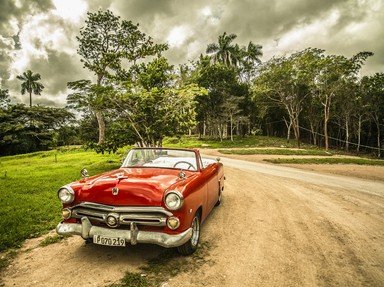Quiz Answer Key and Fun Facts
1. Early SAABs, DKWs and Trabants have this peculiar engine type in common. Usually leaving a blue cloud behind them, these engines were more usually associated with motorcycles. What kind of engine is it?
2. This specific material allowed the construction of lighter, thermally more efficient and less prone to corrosion internal combustion engines. Usually modern engines are all casted with this metal or, at least, have their heads made of it. What material is this?
3. V8 engines were extremely expensive and considered sophisticated when they first appeared. However, one company discovered a new way to produce these engines, making them cheaper and easier to manufacture and thus allowing them to become popular. What company was this?
4. This company is famous for only using boxer engines on their automobiles, an act of which they are proud. Their rally cars became widely famous for being painted in a particular blue shade. All-wheel drive traction is also quite common amongst their products. What is the name of this brand?
5. Germany produces some of the world's finest inline 6-cylinder engines. However, which of the following German brands never produced this engine configuration?
6. Which of the following can't be considered a reason for increasing the number of cylinders while designing a new engine?
7. Automobiles propelled by electric motors are a 21th century phenomena. True or false?
8. Downsizing engines is an increasing tendency in the modern industry. Which of the following technologies, associated with internal combustion engines, experienced the most considerable advances allowing the downsizing phenomena to take place?
9. In 1978, Cadillac experimented with something quite unusual, by installing a turbine engine in an Eldorado. Quirkier than the engine itself was the fuel it used. What fuel was it?
10. Around the year 2000, SAAB was experimenting a new engine concept, which they named SVC. What unique feature did this engine have?
Source: Author
Landau80
This quiz was reviewed by FunTrivia editor
stedman before going online.
Any errors found in FunTrivia content are routinely corrected through our feedback system.

